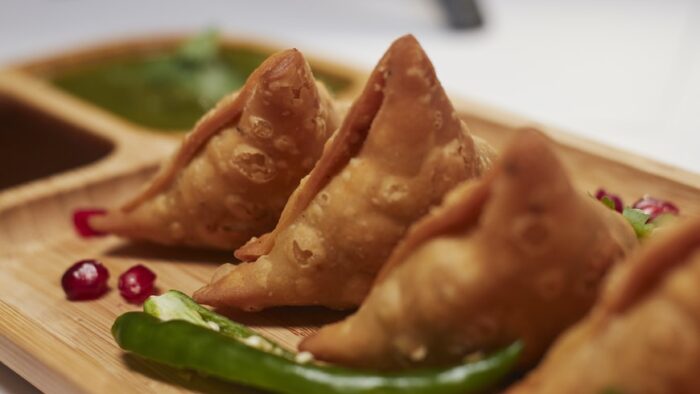Chef Colin Roche, a US-based Chef, comes with three decades of experience in hospitality. Founder of the YouTube channel Food Media Network, Colin Roche is a food entrepreneur and a podcast host. He is also a certified culinary educator, with expertise in culinary and hospitality education, and the co-author of the book Culinary Educators.
In this interview, Chef Colin Roche tells us about the popularity and opportunities for Indian cuisine in the US as well as the means of addressing the challenges associated with this.
What are some of the most essential aspects of Indian cuisine that need to be communicated to an international audience?
From my understanding, Indian cuisine dates back to nearly 5,000 years ago. The coming of various groups and cultures to inhabit India led to a melting pot of flavours and regional cuisines. Today Indian food comprises a number of these regional cuisines that differ from each other due to numerous factors, such as soil type and climate, as well as cultural and ethnic groups, as well as the availability of local spices, herbs, vegetables, and fruits. And this is something that many people around the world don’t realize.
In addition, India is the largest producer of spices in the world. And to me, this is the common thread that runs through most Indian food, which is the use of numerous spices to create both flavour and aroma in the food.
I think many people in the US have a fixed and limited view of what Indian cuisine is. Getting the word out that there is a wide variety of flavours and tastes within the cuisine would be key and that it is just waiting to be discovered.
More often than not, Indian cuisine is equated with “curry”. What do people in the US associate “curry” with and to what extent is this association authentic, in your opinion?
I believe most consumers in the US define the word “curry” very similar to the way it is defined in many dictionaries:
a food, dish, or sauce in Indian cuisine seasoned with a mixture of pungent spices.
also: a food or dish seasoned with curry powder
I also think the word “curry”, to most Americans, is associated with Curry Powder, the yellow, turmeric-heavy, seasoning that changes any dish into a “curry”. I don’t think they realize that curry powder is a blend of various spices and that it can be very different depending on what spices, and their amounts, are combined to make that curry powder. Also, how long the spices have been blended is another factor that is not often realized. The curry powders sitting around in most consumers’ spice cabinets have lost their pungency months or even years ago! I also believe this limited understanding of the word “curry” by many American consumers is confused even further when Thai curries are introduced, such as green curries or red curries.
Over 15 Indian culinary terms are a part of the Oxford English Dictionary such as Chaat, Chutney, Masala, Naan. How has this contributed to the popularity of Indian cuisine in the US?
I think it shows we have a long way to go as there are so many other culinary terms that should also be included. And until the Indian culinary terms are put into use in the kitchens around the world, both professional and the home kitchen, I don’t think these Indian culinary teams will become common or mainstream.
For instance, despite many words in the OED, Indian street food is neither commonly available nor popular in the US right now, and the reason is not rooted in taste. Most Americans who have had good Indian cuisine once in their lives certainly return to Indian restaurants for that taste again. However, the problem is that the number of Americans who have tasted good Indian food is a very small percentage of the total number of Americans. In other words, I believe the real reason behind Indian Cuisine’s poor popularity lies in factors other than taste. Here are a few reasons why I think it is not as popular as it could be.
First, Indian Cuisine, and all its various regions, is just unknown and foreign to most Americans. There is a need and immense scope for marketing Indian cuisine.
Second, preparing Indian food is laborious and time-consuming with lots of expertise involved which is something that collides head-on with Americans’ fast lifestyles.
Third, Indian food relies very heavily on locally available ingredients for its genuine taste and aroma, and these products and ingredients are often very difficult to find anywhere outside India.
Fourth, Indian food is often way too hot and spicy for many Americans to handle.
How could media and popular culture – cooking shows, food-based documentaries, literary works etc.–be used effectively to increase the understanding of Indian food?
I believe popular culture plays a role as it is highly influential on its viewers, especially that which is directed towards the youth of a society who are more influential and less set in their ways. I also believe mass media, which includes radio, television, and print, is a great source of information for any society. The images that we see every day and the message that we hear from these media instruments can have a very profound impact on almost all of the choices that we make, including the choices that we make with regard to our food.
And since advertising is the primary source of income for most media, we therefore will see several commercial messages on a daily basis, with a majority of them being connected with food and the food industry as a whole. Television in particular has a huge impact on our food habits. It is also the primary influence for children and young adults. The messages that are portrayed by these advertisements are then remembered by the child which will then often manifest into his/her choices.
Television channels, radio, print media and the internet are all used in this country to deliver the message about various food items that are in the market. Food manufacturers market their products in these mediums in order to ensure that their products are sold to their target audiences. Millions of dollars are spent by manufacturers to make their advertisements attractive.
Advertising is therefore central to the marketing of the US food supply and could be utilized to promote Indian food. Food products are the second-largest advertiser in the American economy (the first being the automotive industry) and are a leading buyer of television, newspaper, magazine, billboard, and radio advertisements. Therefore, these would all be good choices to use to increase the understanding, knowledge and likeliness of Indian food.
How can US-based food entrepreneurs be encouraged to experiment and promote Indian cuisines in the US? What are some of the preferred customer choices and challenges when it comes to Indian foods?
I think understanding is one of the biggest obstacles. The techniques used in Indian cooking are no different from those used in other cuisines of the world, such as roasting, grilling, stewing, braising, frying, steaming, etc.
However, what is different, which is what I think gives Indian cuisine its uniqueness, is the knowledgeable use of spices and seasonings. This of course can be a double-edged sword. The unique flavours that are created by the use of a variety of species and seasonings is what sets Indian cuisine apart and is what consumers come to enjoy about the cuisine; but it is also what makes the cuisines and its dishes confusing to consumers here in the US, especially since many of the spices used in the various combinations are not familiar or known in this country.
I also think that the benefits and variety of Indian cuisine need to be promoted. And this needs to be done in a way that is easy to understand, with dishes that are easy for consumers to replicate. These dishes/recipes also need to be quick to prepare as time is very limited for most Americans to commit to meal preparation.

What would be three Indian dishes that a local American would instantly associate with?
- Any curry dish, such as chicken curry. And by that, I mean any dish cooked with curry powder, which as mentioned often does not do authentic Indian cuisine any favors or help promote it further.
- Naan bread is becoming very popular here in the US and I think that is because many people are already familiar with pita bread and find it to be similar. Pappadums are also becoming popular.
- Samosas, the filled and then deep-fried savory pastries, are also gaining in popularity and name recognition. Americans are already very familiar with stuffed pastries and kinds of pasta, such as kinds of ravioli, perogies, wontons, egg rolls, etc., so Samosa is an easy food for Americans to relate to and easy to get them to try.





